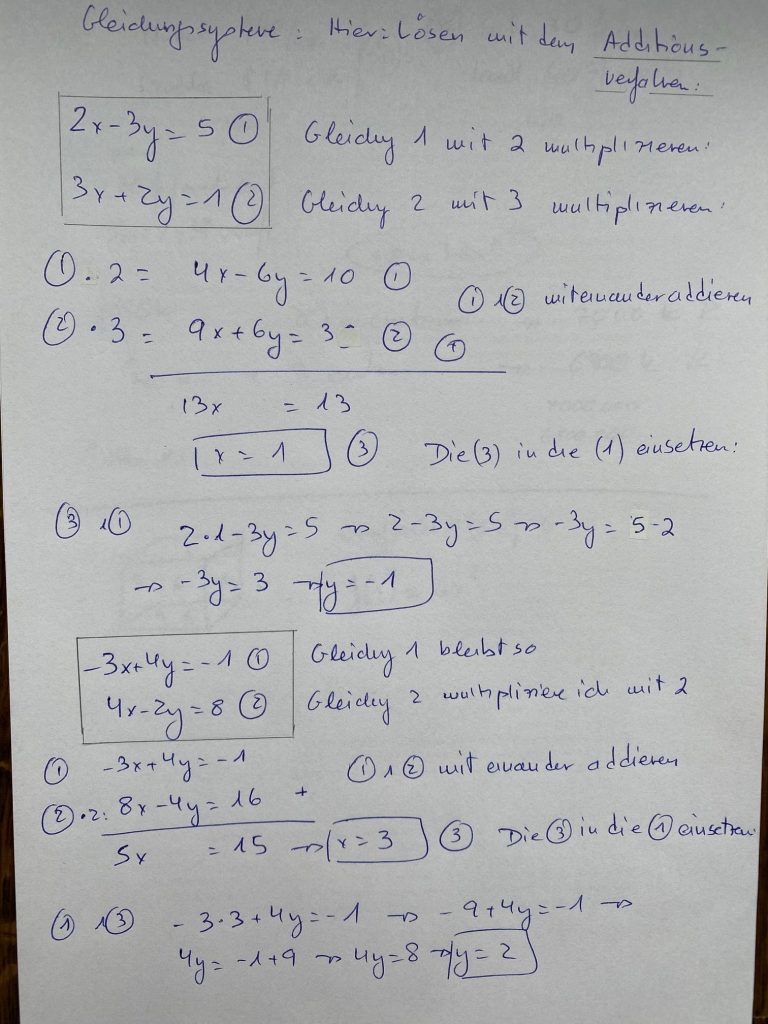Linear systems of equations are equations with several unknown variables that you want to solve.
The linear systems of equations are content of the 7th and/or 8th grade, but are always needed to solve tasks in the Q phase. For this reason, systems of linear equations are among the absolutely essential topics that should be mastered.
There are 3 methods for solving linear systems of equations, all of which are equivalent.
The addition method
Here are 2 examples where the addition method is used:

The aim of the addition method is to change one or both equations in such a way that by adding them, one variable is eliminated and the equation can be solved.
This is achieved by multiplying one or both equations by numbers (always both sides of the equation!) so that one variable can be reduced at the end.
In the first example, we want to (arbitrarily) reduce the variable y. We therefore have to multiply equation no. 1 by 2 (so that -6y is created) and multiply equation no. 2 by 3 (so that +6y is created). Please note that both sides of such multiplications must always be multiplied.
This means that equation no. 1 contains -6y and equation no. 2 contains +6y.
The next step is to add the two equations together and we get an equation that contains only one variable, namely x. The equation is solved for x. The value for x is then inserted into one of the two original equations and the second variable, in this case y, is calculated.
The system of equations is solved by the addition method.